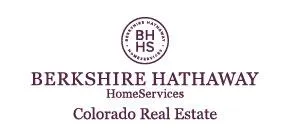ADVERTISE WITH US | LATEST ISSUE | NEWS | EVENTS | ABOUT | CONTACT
NEWS

How to Calculate ROI for a Rental Property
Your return on investment (ROI) is how much money you make or lose on a property investment. It should be enough to cover expenses and have positive cash flow. ROI can vary greatly, depending on the formulas you use.
The 2% rule. This rule states that the monthly rent for a rental property should be at least 2% of its purchase price. If you paid $300,000 for your home, you should be able to rent it for $6,000, as $300,000 X 0.02 = $6,000. This figure may be unrealistic in most markets.
The 1% rule. Let’s say that monthly rents for single family homes like yours are closer to $3,000. That’s only a 1% return on your $300,000 home. Is it worth it? Yes. If you combine the costs of your first mortgage and equity loan at $240,000, and the projected monthly rent of $3,000, you’ll net $600 a month in addition to the renter paying your mortgages. $240,000 X 0.01 = $2,400. $3,000 - $2,400 = $600. $600 X 12 = $7,200.
ROI for rental properties is determined by subtracting the total operating costs from the total rental income for the year and dividing this number by the mortgage amount. Operating expenses don’t include mortgage costs, but it does include repairs, maintenance, taxes, utilities, vacancy losses, management fees, etc. $3,000 X 12 = $36,000. Monthly operating costs are $800 X 12 = $9,600. $36,000 - $9,600 = $26,400. $26,400 / $240,000 = 0.11 ROI.
ROI should increase the longer you own the property.
Need help evaluating a potential investment property? Your Berkshire Hathaway HomeServices Colorado Real Estate Forever AgentSM is always here to help with your real estate needs and questions. Call us at 303-905-8850 or visit BHHScore.com.


Publisher's Letter
Dawa Sherpa, Publisher
The holiday season is upon us. A time to express appreciation for the people, experiences, and opportunities that enrich our lives. As we take a moment to give thanks and celebrate with our families and our communities – let’s not forget the uniquely valuable small, local businesses that are at the heart of our communities.
In today’s fast-paced world, shopping has never been more convenient with online giants and big-box stores offering rapid delivery and low prices. But, unlike mass retailers, small businesses and local shop owners offer personal relationships, leading to better service and customized recommendations. Whether it’s a handmade candle or boutique clothing, these businesses offer a personal touch that can’t be replicated.
The holiday season is a crucial time for small businesses. Events like “Small Business Saturday” remind us to support the shops that keep our communities vibrant. But it’s important to continue that support throughout the year to ensure these businesses thrive.
This holiday season, when shopping for a gift, a service, or just a little treat for yourself, consider visiting our local businesses first. Every purchase makes a meaningful difference, helping build a stronger, more connected community for everyone.
Happy Thanksgiving,
Dawa






